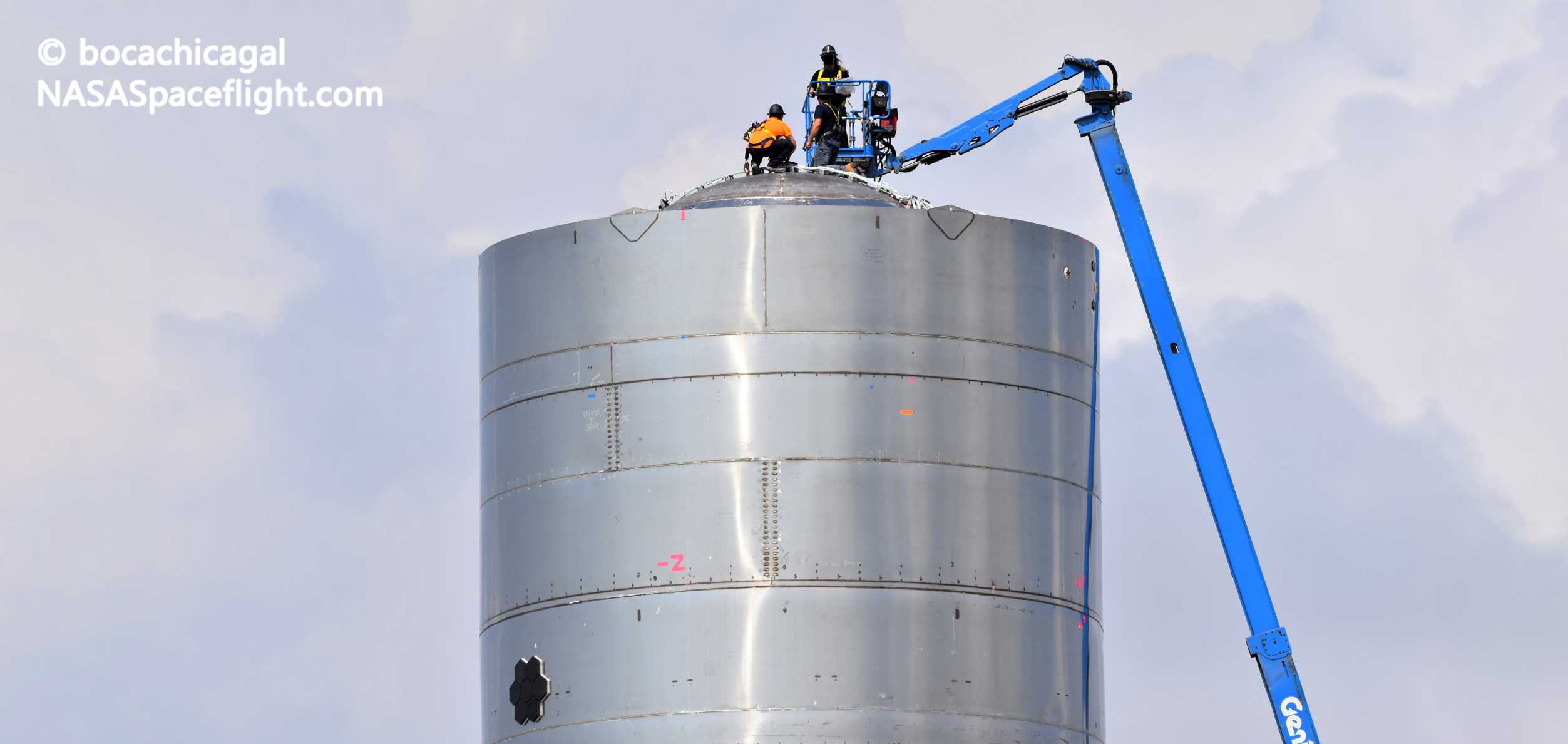
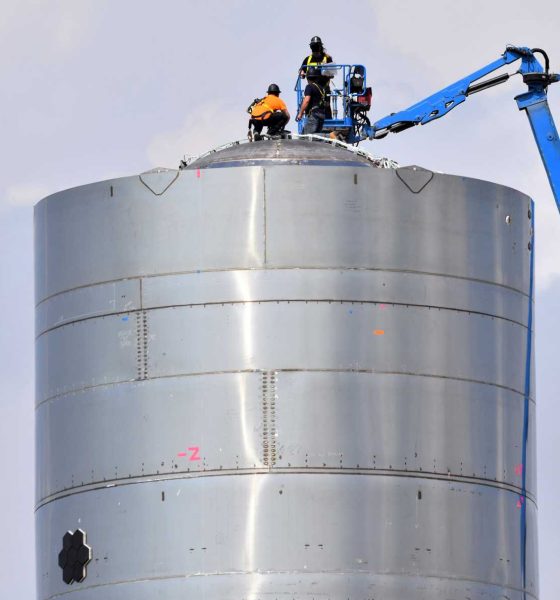
News
SpaceX fires up Starship rocket twice in 30 hours ahead of next big tests
SpaceX has successfully fired up a full-scale Starship rocket for the second time in barely 30 hours and removed the ship’s Raptor engine to perform an additional suite of “cryo testing”.
Around 7pm CDT on May 6th, SpaceX technicians began loading the fourth full-scale Starship with liquid oxygen and methane, filling up a large portion of its massive propellant tanks. Just the latest in a line of several tests involving wet dress rehearsals (WDR) completed in the days prior, this test would soon become exceptional. About an hour and a half after work began, Starship SN4’s lone Raptor engine ignited and burned for ~3 seconds, marking the first time in history a next-generation SpaceX rocket truly came alive with one of the engines designed to take it all the way to orbit.
In line with tests performed with Starhopper – a low-fidelity, subscale tested that flew twice with Raptor – last year, it would have been business as usual if SpaceX had called it a day and moved on to something else with Starship SN4. Instead, Starship performed another WDR and fired up its Raptor engine for a second time in just 30 hours after SpaceX teams inspected the rocket and cleared it for another round. It’s unknown why two back-to-back static fires were performed but, to be clear, every step Starship SN4 takes forward is a step into uncharted territory. Already, the ship’s next steps could come as soon as Friday, May 8th.
According to CEO Elon Musk, SpaceX’s second Starship SN4 static fire test was completed successfully and actually marked the operational debut of a critical aspect of the next-generation launch vehicle and spacecraft. Known as header tanks, Starship needs two smaller secondary propellant tanks to complement its main tanks, a need driven mainly by the challenges of landing such a large and mobile spacecraft. Smaller header tanks will also make it dramatically easier for SpaceX to insulate cryogenic propellant and ensure it remains liquid over long-duration cruises in space, but safe and reliable landings are a more pressing concern for these early prototypes.
During landing operations, the main benefits smaller header tanks offer are relative ease of pressurization (needed to safely feed Raptor engines) and a much lower risk of issues from sloshing, which can introduce bubbles and voids that can obliterate rocket engines if ingested. Impressively, per Musk, Starship SN4 completed its second static fire test using its internal liquid methane header tank – a sort of bubble attached to the bottom of the main methane tank dome.
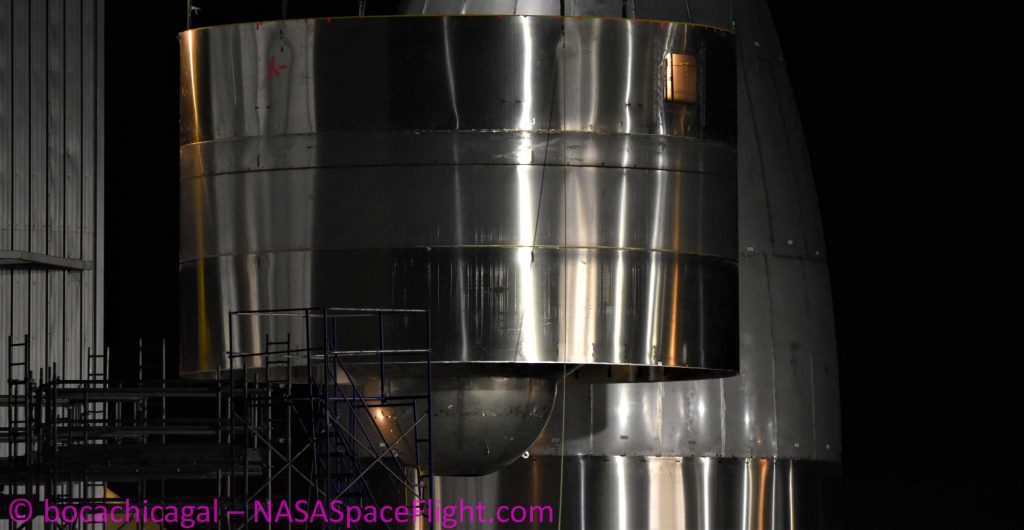
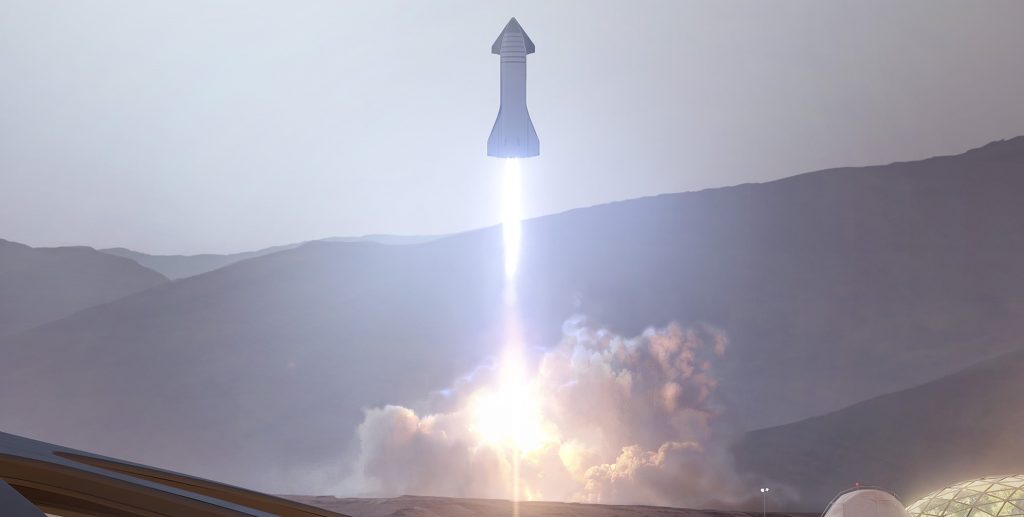
Starship’s liquid oxygen header tank is situated at the tip of the conical nose section, a part that all full-scale ships have been tested without thus far. However, the use of the fuel header tank on May 7th means that Starship SN4 already has a functional, plumbed header tank installed, verifying the partial functionality of a critical part of the next-generation launch vehicle. A second static fire will have also provided SpaceX a wealth of extra data about Raptor’s performance while installed on Starship, invaluable at such an early stage of integrated testing.
Two Starship static fires now under its belt, SpaceX removed SN4’s Raptor engine around 12 hours after its second test and returned it to storage at the company’s nearby factory facilities. According to public notices provided by Cameron County, Texas officials, SpaceX’s next Starship SN4 activity is expected to occur on May 8th with backup windows on the 9th and 10th and will involve “cryo testing”.
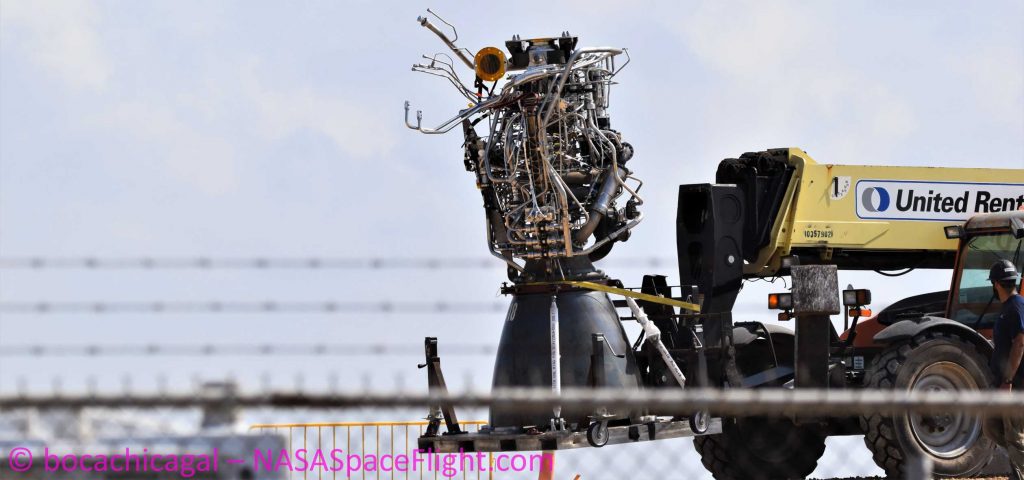
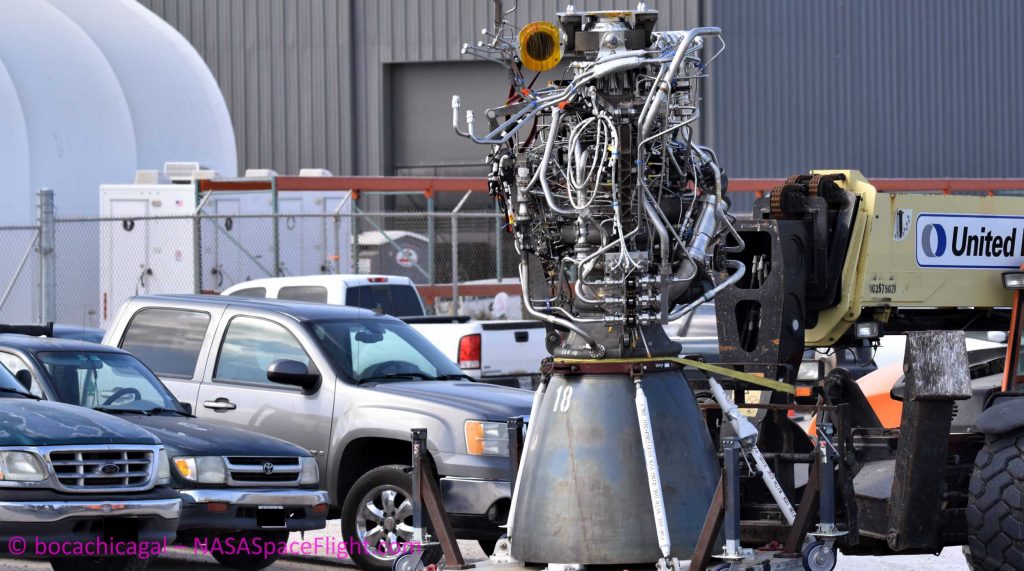
The most obvious conclusion is that SpaceX – having completed enough static fire testing to verify Starship SN4’s performance – now wants to really put the rocket through its paces with another cryogenic test. Completed on April 26th, the ship’s first cryogenic ‘proof’ test maxed out at around 4.9 bar (70 psi), enough for low-stress hop tests but well short of the sustained pressure needed for orbital spaceflight. While testing singular propellant tanks in the first few months of 2020, Musk revealed that SpaceX was targeting a minimum of 6 bar (~90 psi) for orbital Starship flights – ~8 bar (115 psi) with a 25% safety factor.
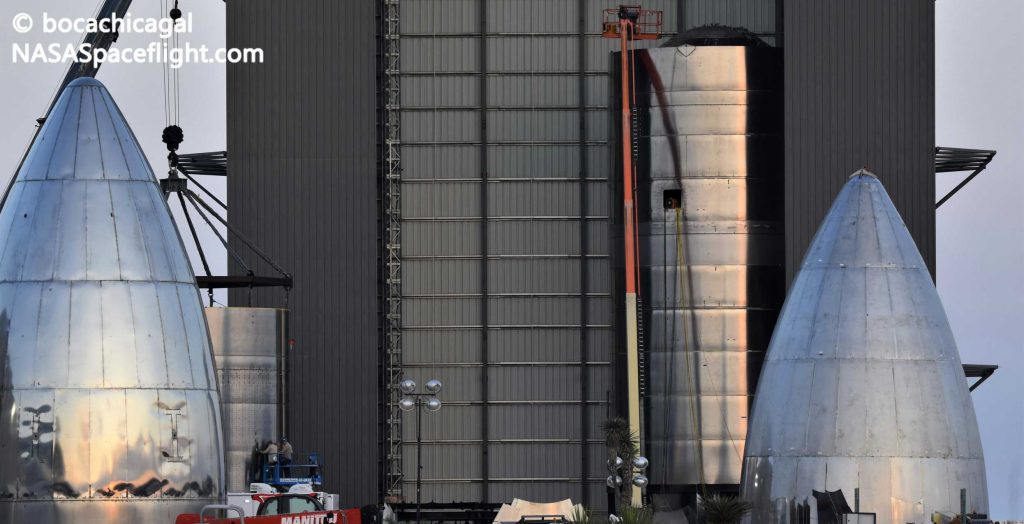
The company actually achieved 8.4 bar with one of its Starship test tanks, the same processes of which were used to build Starship SN4, but a full-scale ship has yet to demonstrate those pressures. Now, SpaceX already has a fifth full-scale prototype (Starship SN5) likely just a week or so away from pad readiness, meaning that Starship SN4’s potential destruction during pressure testing wouldn’t have a big impact on plans for a series of imminent flight tests. If SN4 survives pressure testing, it would likely have its Raptor engine reinstalled and move on to a 150m (500 ft) hop test.

News
SpaceX shades airline for seeking contract with Amazon’s Starlink rival

SpaceX employees, including its CEO Elon Musk, shaded American Airlines on social media this past weekend due to the company’s reported talks with Amazon’s Starlink rival, Leo.
Starlink has been adopted by several airlines, including United Airlines, Qatar Airways, Hawaiian Airlines, WestJet, Air France, airBaltic, and others. It has gained notoriety as an extremely solid, dependable, and reliable option for airline travel, as traditional options frequently cause users to lose connection to the internet.
Many airlines have made the switch, while others continue to mull the options available to them. American Airlines is one of them.
A report from Bloomberg indicates the airline is thinking of going with a Starlink rival owned by Amazon, called Leo. It was previously referred to as Project Kuiper.
American CEO Robert Isom said (via Bloomberg):
“While there’s Starlink, there are other low-Earth-orbit satellite opportunities that we can look at. We’re making sure that American is going to have what our customers need.”
Isom also said American has been in touch with Amazon about installing Leo on its aircraft, but he would not reveal the status of any discussions with the company.
The report caught the attention of Michael Nicolls, the Vice President of Starlink Engineering at SpaceX, who said:
“Only fly on airlines with good connectivity… and only one source of good connectivity at the moment…”
CEO Elon Musk replied to Nicolls by stating that American Airlines risks losing “a lot of customers if their connectivity solution fails.”
American Airlines will lose a lot of customers if their connectivity solution fails
— Elon Musk (@elonmusk) December 14, 2025
There are over 8,000 Starlink satellites in orbit currently, offering internet coverage in over 150 countries and territories globally. SpaceX expands its array of satellites nearly every week with launches from California and Florida, aiming to offer internet access to everyone across the globe.
Currently, the company is focusing on expanding into new markets, such as Africa and Asia.
News
Tesla Model Y Standard stuns in new range test, besting its Premium siblings
Tesla’s newer vehicles have continued to meet or exceed their EPA estimates. This is a drastic change, as every 2018-2023 model year Tesla that Edmunds assessed did not meet its range estimates.

The Tesla Model Y Standard stunned in a new range test performed by automotive media outlet Edmunds, besting all of its Premium siblings that are more expensive and more luxurious in terms of features.
Testing showed the Model Y Standard exceeded its EPA-estimated range rating of 321 miles, as Edmunds said it is the “longest-range Model Y that we’ve ever put on our loop.” In the past, some vehicles have come up short in comparison with EPA ranges; for example, the Model Y’s previous generation vehicle had an EPA-estimated range of 330 miles, but only drove 310.
Additionally, the Launch Series Model Y, the first configuration to be built in the “Juniper” program, landed perfectly on the EPA’s range estimates at 327 miles.
It was also more efficient than Premium offerings, as it utilized just 22.8 kWh to go 100 miles. The Launch Series used 26.8 kWh to travel the same distance.
It is tested using Edmunds’ traditional EV range testing procedure, which follows a strict route of 60 percent city and 40 percent highway driving. The average speed throughout the trip is 40 MPH, and the car is required to stay within 5 MPH of all posted speed limits.
Each car is also put in its most efficient drive setting, and the climate is kept on auto at 72 degrees.
“All of this most accurately represents the real-world driving that owners do day to day,” the publication says.
With this procedure, testing is as consistent as it can get. Of course, there are other factors, like temperature and traffic density. However, one thing is important to note: Tesla’s newer vehicles have continued to meet or exceed their EPA estimates. This is a drastic change, as every 2018-2023 model year Tesla that Edmunds assessed did not meet its range estimates.
Tesla Model Y Standard vs. Tesla Model Y Premium
Tesla’s two Model Y levels both offer a great option for whichever fits your budget. However, when you sit in both cars, you will notice distinct differences between them.
The Premium definitely has a more luxurious feel, while the Standard is stripped of many of the more premium features, like Vegan Leather Interior, acoustic-lined glass, and a better sound system.
You can read our full review of the Model Y Standard below:
Tesla Model Y Standard Full Review: Is it worth the lower price?
News
Xpeng CEO: Tesla FSD 14.2 has developed “near-Level 4” performance
While acknowledging that imperfections remain, the Xpeng CEO said FSD’s current iteration significantly surpasses last year’s capabilities.

Xpeng CEO He Xiaopeng has offered fresh praise for Tesla’s Full Self-Driving (FSD) system after revisiting Silicon Valley more than a year after his first hands-on experience.
Following extended test drives of Tesla vehicles running the latest FSD software, He stated that the system has made major strides, reinforcing his view that Tesla’s approach to autonomy is indeed the proper path towards autonomy.
Tesla FSD closing in on Level 4 driving
During his visit, He test-drove a Tesla equipped with FSD V14.2. He also rode in a Tesla Robotaxi. Over roughly five hours of driving across Silicon Valley and San Francisco, He said both vehicles delivered consistent and reassuring performance, a notable improvement from his experience a year earlier.
According to He, Tesla’s FSD has evolved from a smooth Level 2 advanced driver assistance system into what he described as a “near-Level 4” experience in terms of capabilities. While acknowledging that imperfections remain, the Xpeng CEO said FSD’s current iteration significantly surpasses last year’s capabilities. He also reiterated his belief that Tesla’s strategy of using the same autonomous software and hardware architecture across private vehicles and robotaxis is the right long-term approach, allowing users to bypass intermediate autonomy stages and move closer to Level 4 functionality.
He previously tested Tesla’s FSD V12.3.6 and Waymo vehicles in California in mid-2024, noting at the time that Waymo performed better in dense urban environments like San Francisco, while Tesla excelled in Silicon Valley and on highways.
Xpeng’s ambitious autonomy roadmap and internal challenge
The Silicon Valley visit also served as a benchmark for Xpeng’s own autonomy ambitions. He stated that Xpeng is looking to improve its VLA autonomous driving system to match the performance of Tesla’s FSD V14.2 within China by August 30, 2026. Xpeng is poised to release its VLA 2.0 smart driving software next quarter, though He cautioned that the initial version will not be able to match FSD V14.2’s capabilities, as noted in a CNEV Post report.
He also added a personal twist to the goal, publicly challenging Xpeng’s autonomous driving team. If the performance target is met by the 2026 deadline, the CEO stated that he will approve the creation of a Chinese-style cafeteria for Xpeng’s Silicon Valley team. If not, Liu Xianming, head of Xpeng’s autonomous driving unit, has pledged to run naked across the Golden Gate Bridge, He noted.








